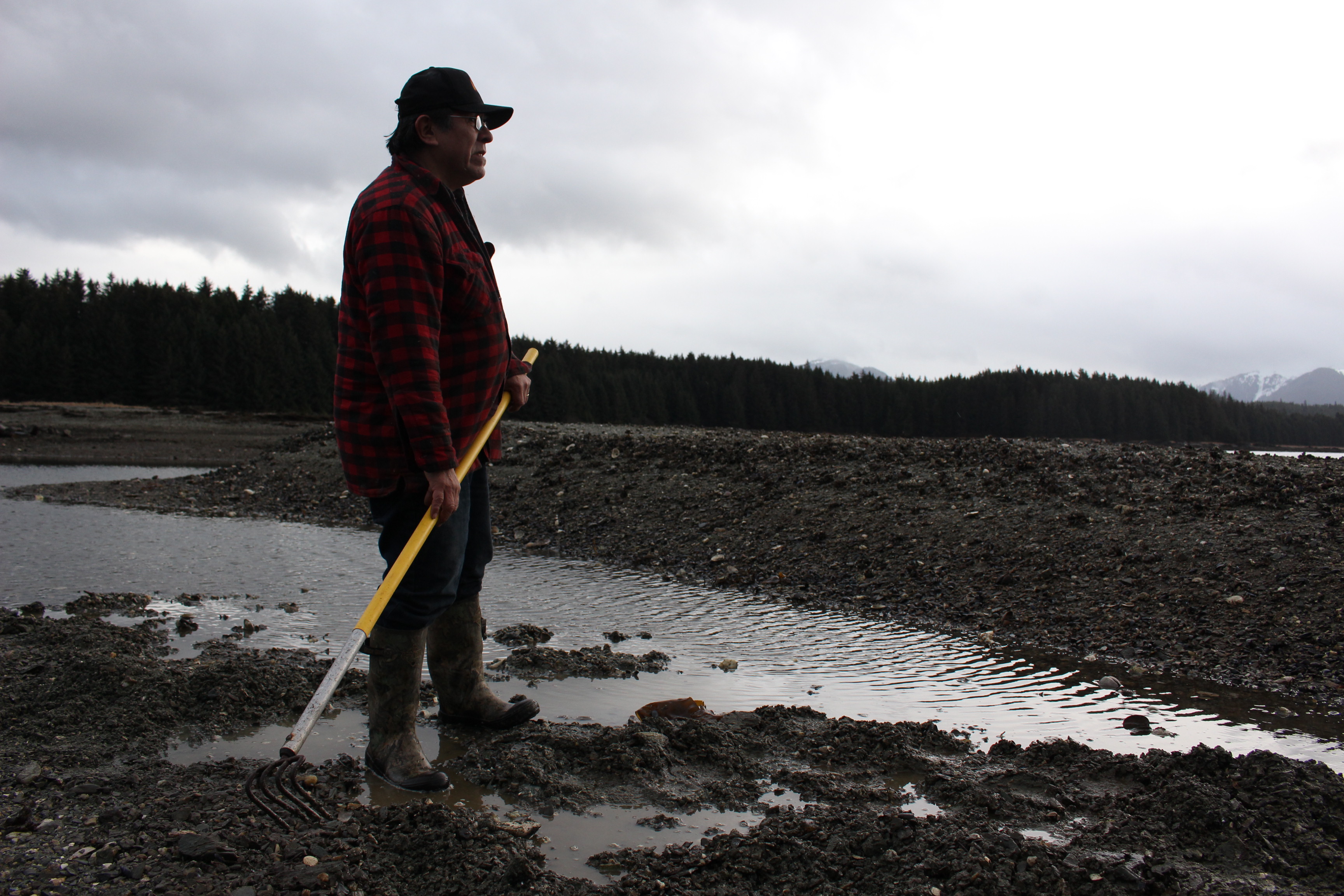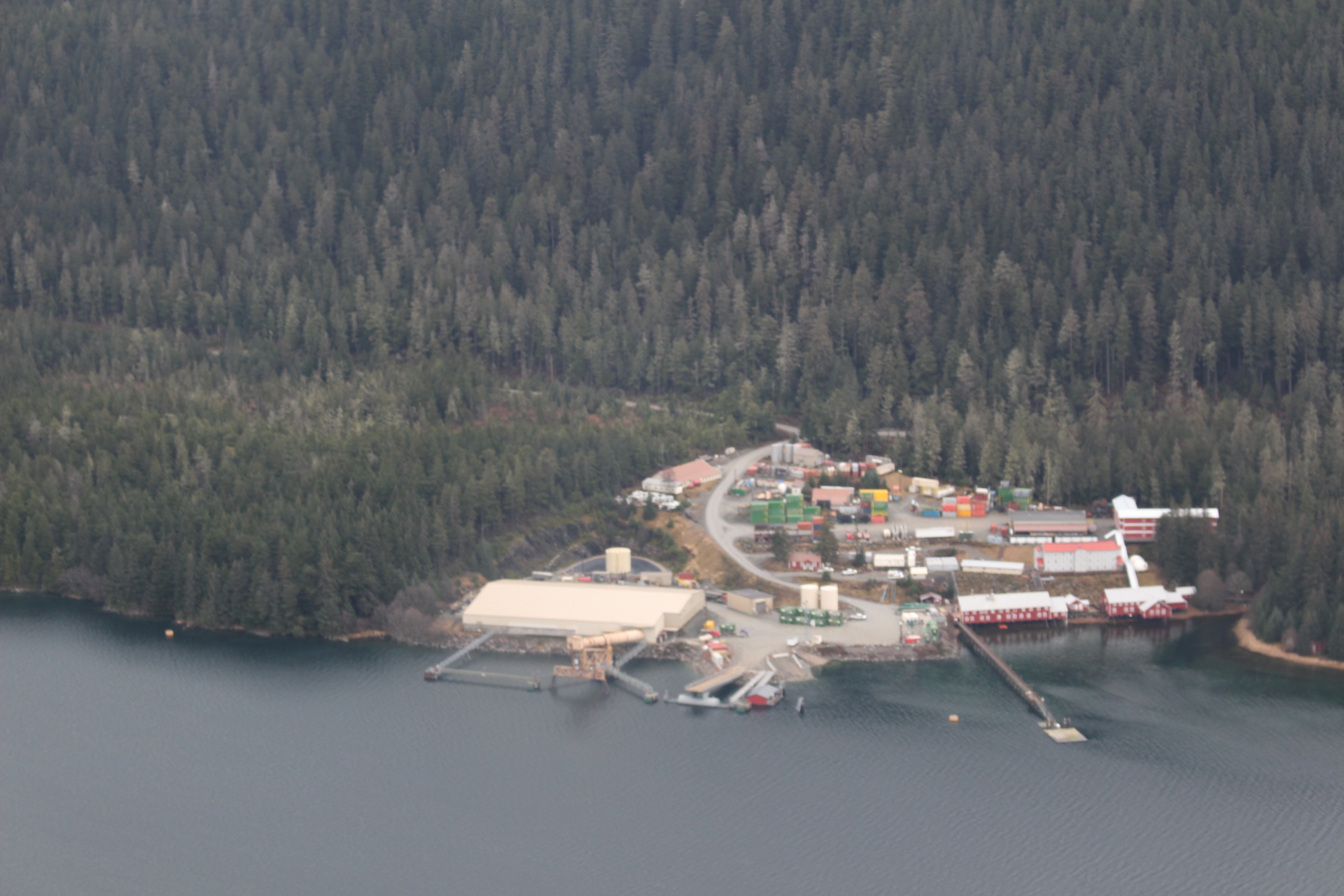Earlier this month, Angoon’s mayor asked for help after discovering high levels of mercury in subsistence seal. With only one grocery store in town, the small Southeast village is dependent on what’s in the water. And according to a tissue sample test, that might include contaminants from a nearby mine.

Alan Zuboff, a Tlingit elder, drags a rake across a pebbly surface on Angoon’s tidal flats. He’s been coming to this spot his whole life.
“Where we’re digging is an old site,” Zuboff said. “It used to be a fish weir back 300 or 500 years ago.”
Today, he’s digging for cockles – a saltwater clam with a grooved, brown shell. Zuboff visits here almost every day at low tide.
“Because if you want to pay $10 for a gallon of milk at the store, it gets pretty pricey to buy stuff from the store,” Zuboff said. “It’s best to live off the land and besides everything is going organic. And we’ve been doing it for 10,000 years. Why not keep it up?”
The reason not to keep it up: the possibility of toxic metals. Angoon’s tribal council has warned people about collecting traditional foods, like seaweed, clams, mussels, crab, cockles and seal.
Back in May, Edward Kookesh, an Angoon hunter, harvested a seal near the shores of Hawk Inlet, and K.J. Metcalf, a Juneau resident who was boating nearby, asked if he could take a sample. Metcalf was the first ranger of Admiralty Island National Monument and now oversees the environmental advocacy nonprofit, The Friends of Admiralty Island.

When the independent lab tests were analyzed months later, he was alarmed at what he saw: elevated levels of mercury.
“As high as they’ve ever been in an Alaskan seal and globally up near the top so just significant,” said Metcalf. “I called Edward Kookesh and said do you still have that seal and he said no it’s been divided up in the community and its eaten.”
“We’re all still alive, you know,” Kookesh said. “But we’re just wondering how bad it’s going to get, if it’s going to get any worse. If we’re going to be able to fix it?”
Kookesh split the seal among 10 people — mostly family and friends from Angoon.
“We make seal grease out of the seal fat and use it with our eggs and our fish,” Kookesh said. “It’s a big part of what we do in subsistence life.”
Thankfully, he says, no one felt sick, but he worries about long term health issues. Exposure to mercury can impact the nervous system. It can impair vision, speech, hearing and cause trembling of the hands.
Given the risks, Kookesh says he won’t be going back to Hawk Inlet to harvest seal.
“I don’t think I’ll be going up there to harvest anything,” Kookesh said. “I don’t even want to make a chance and feed my family or anyone else’s family anything that’s contaminated.”
The location in question is the home of the Greens Creek Mine, which has been operating since the 1980s. It’s one of the largest producers of silver in the country, and the only mine to operate on a national monument.

So it’s subject to regular water quality and sediment testing that gets rolled into a monthly and annual report. It’s submitted to the state’s Department of Environmental Conservation. Then there’s biomonitoring — the testing of sea life, like mussels and sea worms. But not seal.
Allan Nakanishi oversees waste water discharge permitting for mining facilities for the state’s water division.
“It’s difficult for us to see direct evidence or a link between Greens Creeks discharges to what was found in that particular seal species.” Nakanishi said.
Nakanishi says seals are considered a high order life-form, meaning they’re migratory. The bio-monitoring program selects the lowest order on the food chain because they stay put. In other words, a shellfish is easier to pinpoint and use as a basis of analysis to see if anything’s changed.
And Nakanishi said when it comes to mercury levels their tests show nothing has.
“I guess it’s in the ocean but we can’t pinpoint it to Green’s Creek’s operations or their discharges based on what we’re seeing in their effluent monitoring results.” Nakanishi said.
Back in 1989, Greens Creek spilled an unknown amount of ore into the water of Hawk Inlet and went through the steps to clean it up. Since then, Nakanishi says the water quality has returned to pre-mining levels. The seal could have traveled from somewhere else.
“You know, the DEC is correct,” KJ Metcalf of The Friends of Admiralty Island said. “There is that possibility, I would say. But when it’s that high and that dangerous that you’ve got to take some action to determine if it is the mine that’s causing it. If it comes from someplace else and you can prove that we outta know where it came from because that place is bad. ”
Angoon’s mayor and tribal president, Albert Howard, showed me around a neighborhood on Angoon’s seven and a half miles of road.

“She’s got a smokehouse right there. He’s got a smokehouse right there,” Howard said as he started the car.
A little over 400 people live here, and Howard thinks a good 80 percent of Angoon’s residents are out of work.
He says a lot of families rely on subsistence to make ends meet.
“The hardest part is when community members ask if it’s safe to go out and get what they’ve always gotten to feed their families and you don’t have an answer,” Howard said. “And nothing is happening quick enough to give them that answer. And it weighs heavy on you that as a leader, it’s part of your responsibility to make sure everything is safe.
Howard wrote a letter to the state Department of Health and Social Services outlining his concerns. The department says it will issue a formal response, with the Department of Environmental Conservation, in the upcoming week.
On the beach in Angoon, Alan Zuboff has already collected a sizable pile of cockles to fill his blue bucket. He says when goes home at night to eat his dinner, the sweet, briny taste of shellfish is on his mind. But so are the toxic metals.
I am worried about it,” Zuboff said. “But it’s the little person in the back of my mind or that’s sitting on my shoulder, little devil saying, ‘yeah worry.’”
He wonders about the whole big ocean beyond his community that is both a grocery store and a way of life.




